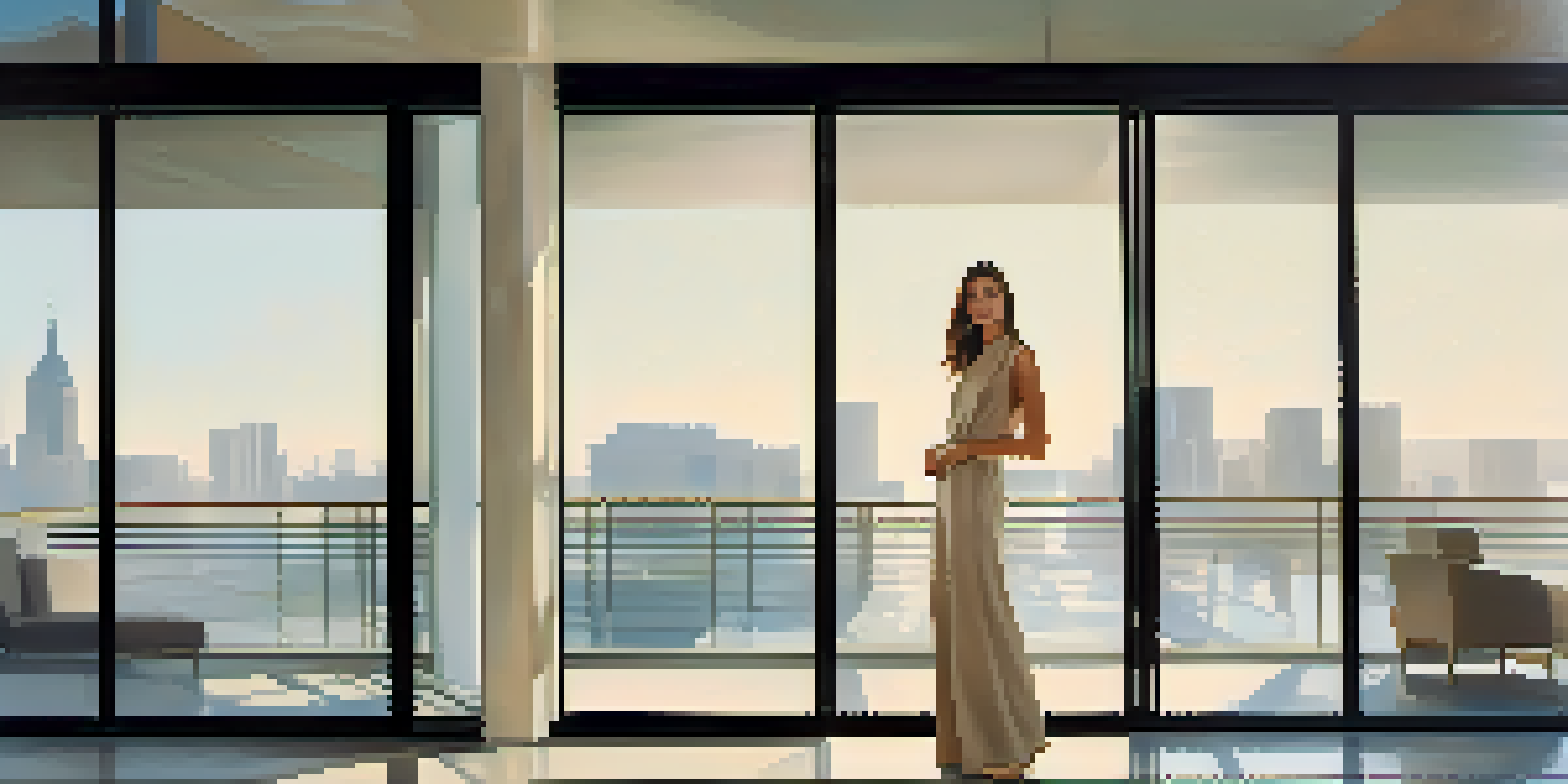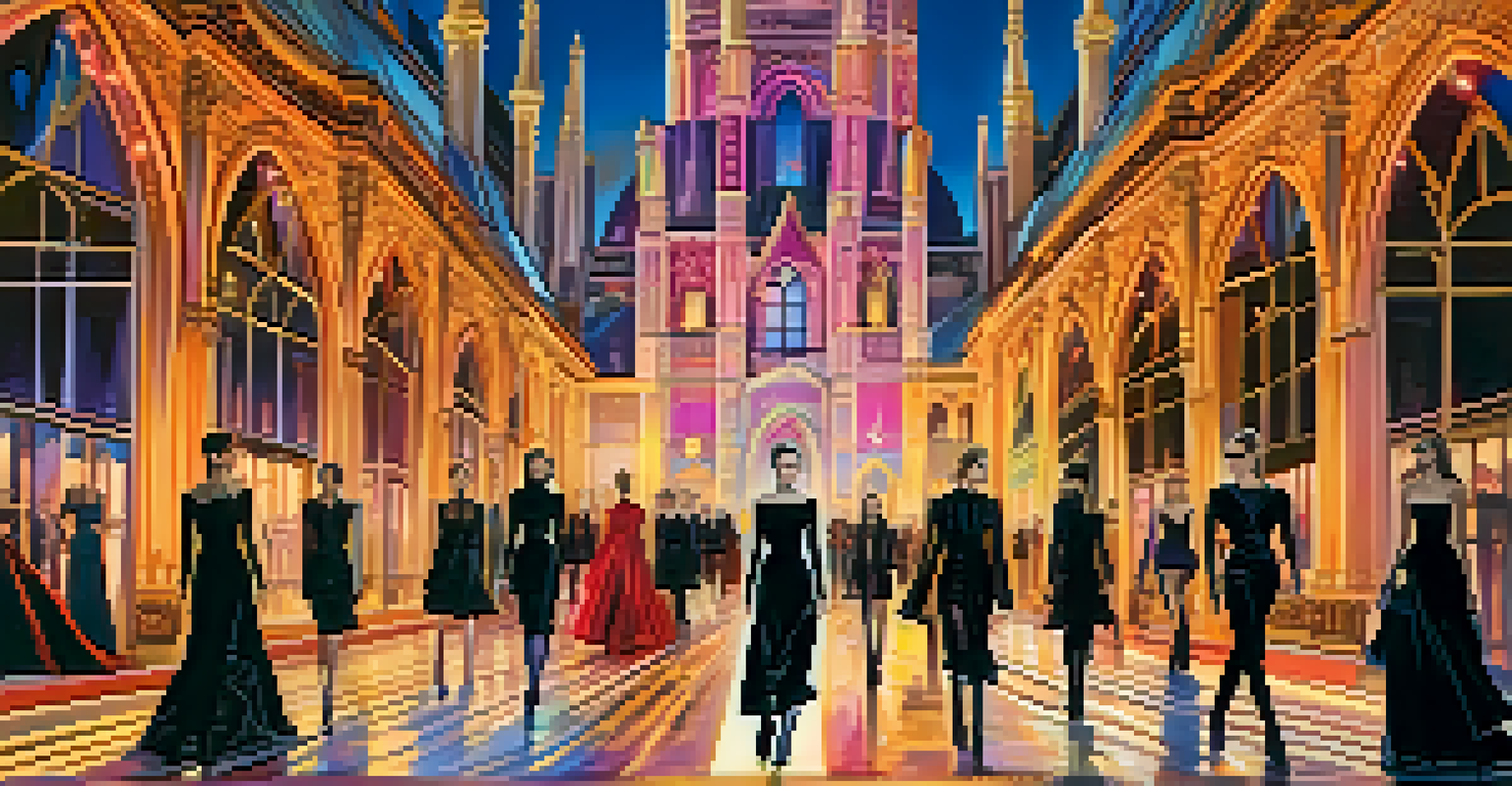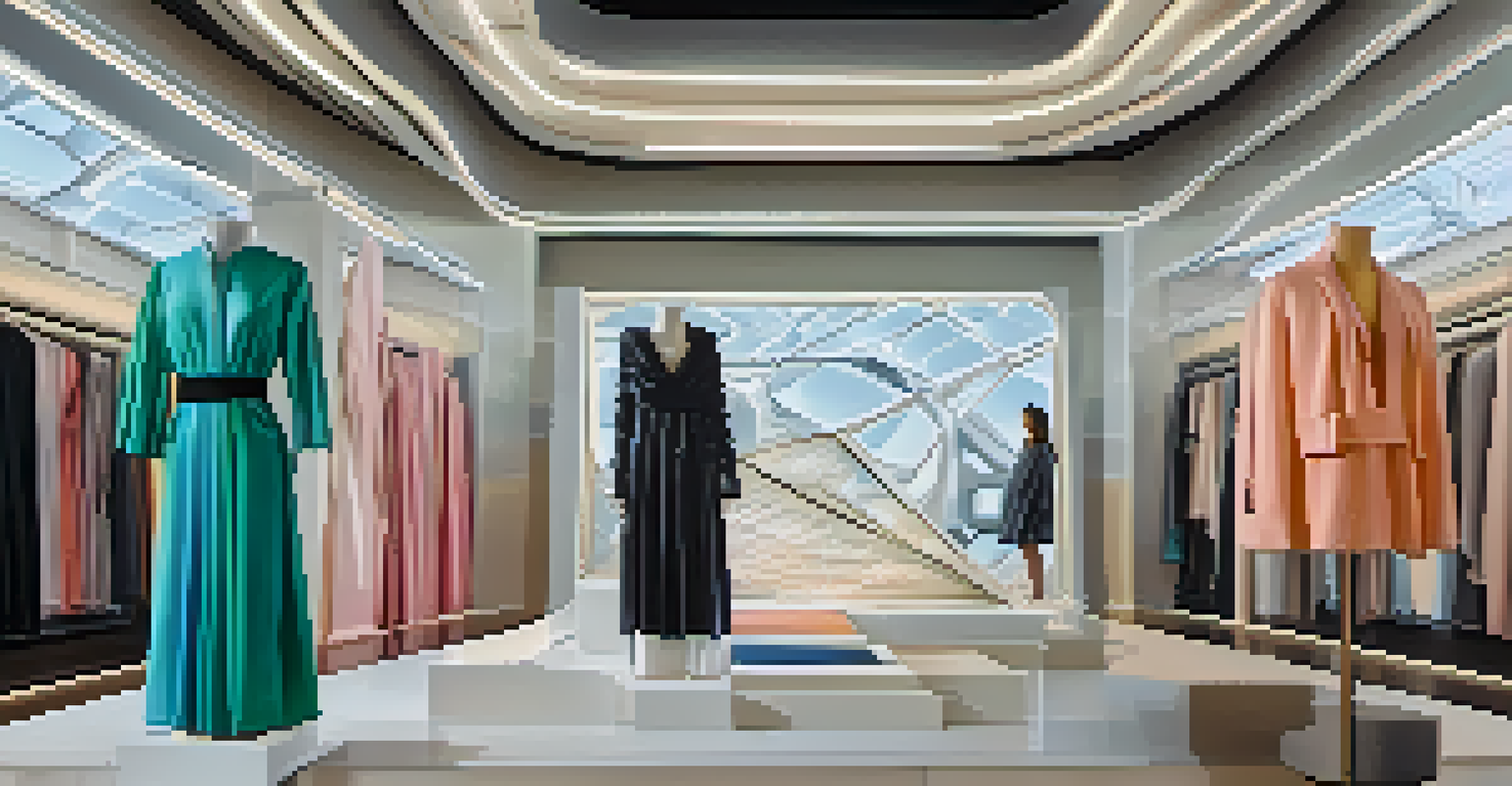Cultural Architecture and Its Reflection in Global Fashion

The Intersection of Architecture and Fashion: An Overview
Cultural architecture and fashion are two realms that often intersect, reflecting societal values and aesthetics. Just as buildings tell stories about the communities they inhabit, fashion serves as a canvas for personal and cultural identity. When we examine these two fields together, we can uncover a rich tapestry of influence that shapes trends and styles worldwide.
Fashion is the armor to survive the reality of everyday life.
For instance, the sleek lines of modernist architecture can inspire minimalist fashion designs, while the intricate details of Gothic cathedrals often find their way into haute couture. This relationship is not just one-sided; designers frequently draw from architectural forms to create garments that evoke the same emotional response as a striking building. The result is a dynamic interplay that enriches both disciplines.
Ultimately, understanding this connection can enhance our appreciation of both architecture and fashion. By recognizing how cultural context informs design, we can better appreciate the creativity that emerges from this collaboration, fostering a deeper connection to the world around us.
Cultural Architecture: A Rich Source of Inspiration
Cultural architecture serves as a visual language that communicates the values and history of a community. From ancient temples to contemporary skyscrapers, each structure carries stories that resonate through time. Designers often look to these architectural forms to find inspiration, translating them into fashion that embodies the same cultural narratives.

Take, for example, the vibrant colors and patterns found in Moroccan riads. These elements can inspire textile designs that reflect the warmth and richness of North African culture. Similarly, the clean lines of Scandinavian architecture can influence the simplicity and functionality seen in Nordic fashion. Such examples highlight how architecture can ignite creativity across various design fields.
Architecture Inspires Fashion Design
Cultural architecture influences fashion by providing visual language and inspiration that reflects societal values and history.
By tapping into these cultural sources, fashion designers not only create visually stunning pieces but also promote cultural appreciation. This fusion of architecture and fashion encourages a dialogue between different cultures, allowing for a greater understanding of global diversity.
Global Fashion Weeks: A Platform for Architectural Influence
Fashion weeks around the globe serve as vital platforms where cultural architecture and fashion converge. Major cities like Paris, Milan, and New York often showcase collections that draw heavily on local architectural styles. Designers utilize the backdrop of iconic buildings to emphasize their collections, creating a narrative that resonates with the audience.
Architecture is the art of how to waste space.
For example, during Paris Fashion Week, many designers have been known to incorporate elements of the Eiffel Tower or the Palais Garnier into their designs. This not only pays homage to the city's architectural heritage but also allows the audience to experience a sense of place through fashion. The visual impact is amplified when the runway reflects the aesthetics of the surrounding architecture.
Moreover, these fashion events attract international attention, making them a melting pot of cultural influences. As designers share their interpretations of architectural elements, they introduce new trends that ripple across the global fashion landscape.
Sustainable Fashion: Learning from Architectural Practices
Sustainability in fashion is a hot topic, and cultural architecture offers valuable lessons on how to create with intent. Many traditional architectural practices emphasize resourcefulness and harmony with the environment. By studying these methods, fashion designers can adopt strategies that minimize waste and promote sustainability in their collections.
For instance, indigenous building techniques often utilize local materials and craftsmanship, principles that can be mirrored in fashion design. Designers can explore using organic fabrics or upcycled materials, drawing from the idea of utilizing what is readily available. This approach not only reduces environmental impact but also celebrates local culture and heritage.
Fashion Weeks Showcase Architectural Ties
Global fashion weeks highlight the connection between fashion and architecture, using iconic buildings as a backdrop to enrich design narratives.
As the fashion industry increasingly embraces sustainability, the architectural world can provide vital insights. By marrying the two fields, designers can create clothing that not only looks good but also respects and honors the environment and cultural traditions.
The Role of Color and Texture in Both Disciplines
Color and texture play pivotal roles in both architecture and fashion, influencing how we perceive and experience each discipline. The choice of color in a building can evoke emotions, just as the fabric color in clothing can impact mood and confidence. Exploring these aspects reveals a fascinating overlap between the two fields.
For example, the earthy tones of adobe structures in the Southwest United States can inspire fashion collections that embrace natural hues. Similarly, the luxurious textures found in Baroque architecture can lead to rich, opulent fabrics in couture. This interplay invites designers to experiment with color palettes and textures that honor architectural influences.
Ultimately, understanding how color and texture function in architecture can enhance fashion design. By borrowing from these principles, designers can create collections that are not only visually appealing but also deeply resonant with cultural significance.
Architectural Trends Shaping Fashion Styles
Architectural trends often reflect societal changes, and these shifts can significantly influence fashion styles. For instance, the rise of eco-friendly architecture has inspired a wave of sustainable fashion, where designers prioritize eco-conscious materials and ethical practices. This synergy allows both fields to evolve and respond to contemporary issues.
Additionally, the popularity of urban architecture has led to the emergence of streetwear, a fashion style that captures the essence of city life. Designers draw inspiration from urban landscapes, creating pieces that resonate with the fast-paced, dynamic nature of modern living. This trend illustrates how architecture can provide a backdrop for new fashion movements.
Sustainability Links Both Industries
Fashion can learn from architectural practices focused on sustainability, promoting eco-friendly materials and ethical production methods.
As society continues to evolve, the relationship between architecture and fashion will undoubtedly grow more complex. By staying attuned to architectural trends, designers can remain relevant and innovative, creating fashion that speaks to the times.
The Future of Fashion: Architectural Innovations Ahead
Looking ahead, the future of fashion is likely to be heavily influenced by innovations in architecture. As technology advances, architects are experimenting with new materials and structures that could inspire groundbreaking fashion designs. This intersection of technology and creativity opens up exciting possibilities for both fields.
Imagine garments made from smart fabrics that respond to environmental changes, much like architectural designs that adapt to their surroundings. This fusion of fashion and architecture could lead to a new wave of wearable technology that is not only functional but also aesthetically pleasing. Designers will need to embrace such innovations to stay at the forefront of the industry.

As we navigate this evolving landscape, the collaboration between architects and fashion designers will be essential. By working together, they can push the boundaries of creativity, ultimately redefining the way we experience both architecture and fashion in our daily lives.